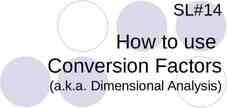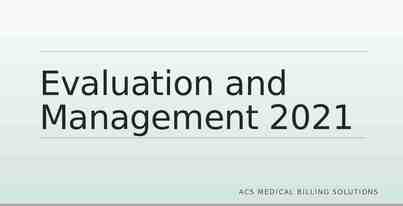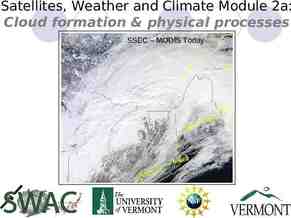Consciousness, self and self-consciousness in the human brain:
22 Slides8.23 MB
Consciousness, self and self-consciousness in the human brain: A global workspace/IDA perspective. Bernard J. Baars The Neurosciences Institute San Diego Institute for Intelligent Systems University of Memphis www.nsi.edu/baars [email protected]
Consciousness is now back on the scientific frontier. Citations to “consciousness” in absolute numbers is now at more than 5,000 articles per year in the biomedical sciences. (Solid line) Relative citation rates parallel this curve (dotted line). More than 5,000 articles per year cite the word “consciousness” in the biomedical sciences alone.
Just the most basic facts Essential Sources in the Scientific Study of Consciousness, Baars, Banks & Newman (eds.) MIT Press, 2003. 600 pages 67 published scientific articles on all aspects of consciousness. See the MIT Press website to download a sample chapter and table of contents. Also new journals (Consciousness & Cognition, Psyche, Journal of Consciousness Studies, Science & Consciousness Review --- www.scicon.org). Association for the Scientific Study of Consciousness.
Flow of some ideas on consciousness. PSYCHOLOGY Baars, GW applied to COMPUTER SCIENCE Newell et al, Global Workspace architectures, Hearsay consciousness. Minsky, Society of Mind Dehaene et al, GW & nn Franklin, IDA model of GW etc. (PNAS, 2003) Neural Darwinism Edelman & Tononi Dynamical systems Walter J. Freeman BRAIN SCIENCES Shanahan, frame problem PHILOSOPHY Dennett on gw, Chalmers, Block, Brooks, etc,
Basic Evidence: The paradox of conscious limited capacity. Only one stream of input becomes conscious among many (from Gazzaniga et al, 1998).
but the brain appears to be a massively parallel organ. (Edelman & Tononi, 2000)
The puzzle of conscious limited capacity. How does conscious neural activity, which is serial, consistent, and limited, emerge from a parallel, massively differentiated, relatively unlimited and unconscious brain? Global Workspace theory suggests a resolution: that consciousness involves brainwide distribution of information.
Global Workspace diagram (Baars, 1983, 1988, 2002, Baars & Franklin, 2003) The theory can be viewed as a theater or publicity metaphor, in a society model of the brain (Minsky). Daniel C. Dennett calls it “fame in the brain.” Note that a global workspace architecture is proposed as a necessary but not sufficient condition for consciousness in the brain. 1. Gw function. PLUS 2. Informativeness PLUS 3. Input to exec self PLUS 4. Integrated over 100-ms steps PLUS 5. Other conditions?
Global Workspace diagram (Baars, 1983, 1988, 2002, Baars & Franklin, 2003) In CS terms, a gw architecture --- Solves the relevance problem (of which knowledge sources to assign to a particular novel problem?) --- It is expensive, and therefore involves tradeoffs (limited capacity vs. wide access) --- It also allows for selection of input by goal-relevance (selective attention). GW architectures are implementable, practical and successful in complex, human-like problem-solving - e.g. IDA, Hearsay, etc. Especially in novel or poorly understood domains.
The three constructs of GW theory. 1. Specialized networks (or agents a la Minsky): Equivalent IDA terms: Codelets Perceptual contexts are in Slipnet (Hofstadter & Mitchell) Goal contexts are in Behavior net (Maes) Partly in Sparse Distributed Memory. (Kanerva) E.g. the 100 Brodmann areas of cortex, which can be still further divided functionally into neurons, columns, blobs, cortical layers, connections, etc. 2. Contexts: E.g., parietal spatial maps (egocentric and allocentric) , which are not conscious but which massively shape conscious vision. (damaged in neglect) 3. Global Workspace: Major convergence-divergence areas of cortex, thalamus, and perhaps other areas. The winning coalition of codelets in the playing field, which is then broadcast to all other codelets.
The “executive self” can be considered a dominant goal context hierarchy in the brain. The “self as observer” may be viewed as the system that interprets conscious input for the executive self. Self as agent/observer can be considered to be “deep contexts,” I.e., dominant, long-lasting, developmentally adaptive, but once established, resistant to change. Major personality features, for example, tend to last for the entire adult lifetime. Self systems are unconscious, as shown by the profound surprise we experience when they are mismatched by experience. From B.J. Baars (1988) A cognitive theory of consciousness. NY: Cambridge University Press
Global workspace theory has gained some acceptance as a framework. see www.nsi.edu/baars/ 2nd edition Baars & Franklin, in progress. Cambridge University Press, 1988 Oxford University Press, 1997
Stan Franklin’s IDA model of GW theory perception, memory & action GW component
A number of authors now endorse aspects of the global workspace hypothesis. Daniel C. Dennett, Ned Block, Thomas Metzinger, Andy Brook Edelman & Tononi, 2000: Crick & Koch Dehaene & Naccache, 2001 Chris Frith Stan Franklin and others in information sciences - the first large-scale implementation of GW. Antonio Damasio (1989) Similar views from: Van Essen, Llinas, ER John, W. Freeman, EG Jones, W. Singer.
There is now extensive evidence for “global” brain activation due to conscious contents. Dehaene et al (2001) Conscious Unconscious Unconscious words activated the word recognition parts of cortex. Conscious words also activated wider regions --- spread throughout the brain. Consistent with the Global Workspace hypothesis. We now have two dozen studies showing the same thing.
Sensory consciousness: hearing one word This involves both conscious and unconscious sensory processes. There are widespread unconscious consequences of conscious input, including memory encoding, action planning, executive input, etc. QuickTime and a decompressor are needed to see this picture. Auditory cortex --more broadly speech perception & comprehension. Prefrontal cortexVoluntary executive fn. An MEG-based animation with high time resolution. FROM: Puelvermueller, MORE
How sensory consciousness relates to executive function (“self as agent”). Definition: Self as an unconscious dominant goal context hierarchy that receives conscious input and outputs voluntary control signals. (e.g., Baars et al, TINS, 2003) Below: Notice the overlap between cortical areas involved in consciousness, and those used for executive control. Regions activated by conscious input. Executive regions involved in goal setting, task switching, input selection, effortful control. Figures from Frackowiak et al (2004) Human Brain Function. (2nd ed, Elsevier/ Academic Press)
Consciousness and executive action fMRI video of a voluntary hand clasp. Activity begins several seconds before the action in prefrtonal cortex/ prermotor cortex. QuickTime and a decompressor are needed to see this picture. These regions may be reflected in “fringe” conscious experiences, like the intention to act. Cortical activity evokes spinal motor nerves and cerebellum, which are unconscious “slave” systems. Voluntary actions can often be contrasted with nonvoluntary acts that are behaviorally very similar. (E.g. knee jerk vs. voluntary knee extension). The differences suggests that voluntary control always involves exeeutive control from prefrontal regions in humans. FROM: E. Hulsmann, , M. Erba and W. Grodda, From will to action: sequential cerebellar contributions to voluntary movement, NeuroImage, 2003,
A striking fact about human self-awareness is how little of it we seem to have. If we simply ask people about themselves, they typically give incorrect, biased or very fragmentary answers. It is rarely explicit and reportable. Yet there is much evidence for the existence of massive “self” (executive) functions in the brain, especially in prefrontal cortex. These large areas are almost entirely unconscious at any given time. By comparison, what can become conscious at any time is a very small amount of information. Limited capacity of consciousness Big executive ? “executive trying to work through a keyhole” The problem of selfawareness is how to select and interpret a tiny amount of the most relevant information.
We need to become conscious of our . own patterns of behavior, especially when we make errors or try to achieve a new goal. Self-awareness is often mismatch-driven. That is, we become conscious of events when our expectations and goals do not match the expected feedback we receive from the world. One advantage of this is that the time of occurrence and input conditions of the mismatch are known. Mismatch-driven self-awareness serves to focus conscious limited capacity on those aspects of ourselves that need repair. Because we are social and enculturated creatures, we also obtain a great deal of “deictic” feedback --- from parents, teachers, siblings, peers, and cultural messages. There is always a question on how to interpret what becomes conscious about ourselves
How can very limited self-awareness be made functional ? . NYTimes.com International Commission Seen Ready to Fault 9/11 Air Defense By PHILIP SHENON Published: April 25, 2004 ASHINGTON, April 24 — The commission investigating the Sept. 11 attacks is expected to offer sharp criticism of the Pentagon's domestic air-defense command in the panel's final report and will suggest that quicker military action on that morning might have prevented a hijacked passenger jet from crashing into the Pentagon itself, according to commission officials. 9/11 is an example of executive system failure. What is publicized (“conscious”) about those failures is just a tiny fragment of the mismatch with executive goals and expectations. The repair process that is evoked by publicity would seem to be contextual and distributed, just as the flawed control strategies that led to the failure were distributed. Each contextual element must do its own local debugging, evoked by repeated publicity. Unlike computer program debugging, human errors are rarely diagnosed explicitly. Historians a century from now will still
Some lessons for self-aware agents. 1. Consciousness trades off limited capacity against global access. 2. It is especially useful for “collaborative” problem solving among sub-agents (codelets, specialized networks, agents) - in novel or poorly understood domains. 3. Executive self systems may attempt to control actions by way of gw architectures, in much the way a societal executive might use media publicity. 4. When executive control fails, it is useful to become conscious of markers of failure --- to publicize them. 5. BUT that does not mean that we become conscious of the error explicitly. 6. Rather, some feedback of failure becomes conscious. 7. The failure itself is interpreted in its own context, or the context may adapt to make sense of the failure. 8. That is, one must “recontextualize” the conscious experience of executive failure in order to learn from it. 9. In sum, the human evidence suggests that effective self-awareness is not just metacognition. It is a particular kind of conscious knowledge, small in size but able to evoke adaptive re-processing.



























